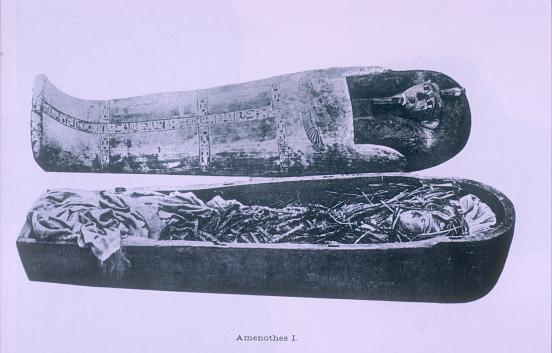Amenhetep I

Son of Ahmes and Ahmes-Nefertari, Amenhetep I ruled Egypt for twenty-one years early in Dynasty XVIII. We know little about his reign except that he led a military campaign in Nubia, strengthened Egypt’s northeastern border, restored the country’s central bureaucracy and legal system, and turned back to Middle Kingdom models on which he based his religious, artistic and architectural activities. His building activities were extensive.
He constructed monuments at Abydos, Al Kab, Saqqarah, Kawm Umbu, and elsewhere, but his major work was at Thebes. Amenhetep I was the first to construct a Memorial Temple away from a tomb, a decision probably made to satisfy the requirements of the Beautiful Festival of the Valley rather than for reasons of security. He constructed a temple in the Dayr al Bahri cirque. It was excavated by the Metropolitan Museum of Art in the 1920s. Statues from the building are in the Met and in the British Museum. Another temple, built with his mother and called the “Meni-set,” stood in Dira’ Abu an Naja. His tomb has not been identified with certainty, but there are several candidates. One is a site near Madinat Habu, another the royal cache (TT 320). KV 39 has also been proposed, and, more recently, so have K93.11 in Dira’ Abu an Naja, and an unknown site in the Dayr al Bahri cirque.
At Karnak, he built a remarkable Egyptian alabaster shrine, the “Menmenu,” now reconstructed in the Karnak Open-Air Museum, and added to the Middle Kingdom shrine that stood there. Amenhetep I’s work at Thebes helped to establish it as the most important city in Egypt and home to some of its most beautiful monuments. Not surprisingly, later generations revered him and his mother as the founders of the Theban Necropolis and considered them two of its guardian deities.
